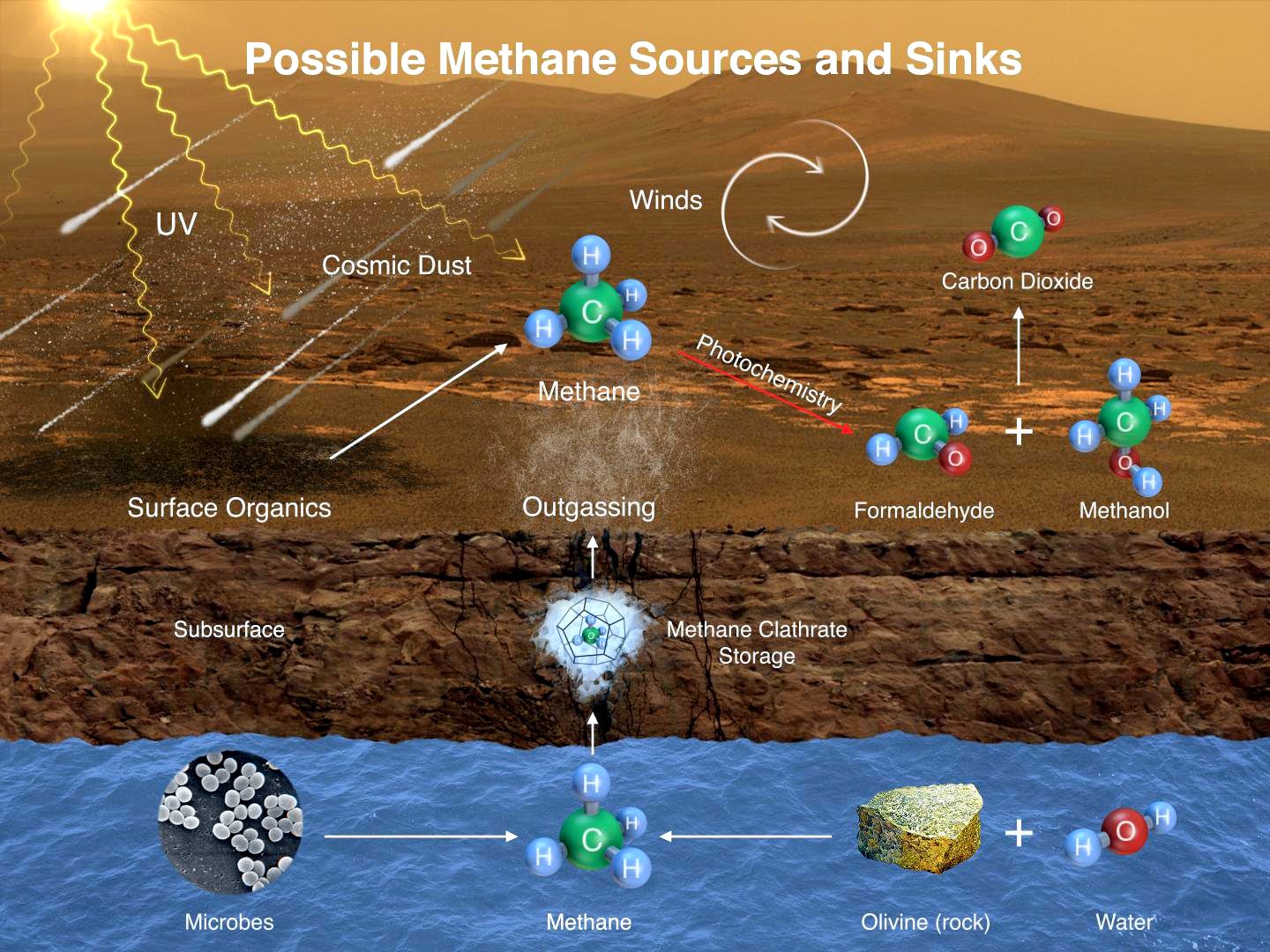Mars Burps
Summer methane measured on Mars (credit: NASA)
Methane burps conjure images of unpleasant belching cattle, melting permafrost, and rotting garbage. The gas is a bi-product of biological activity on Earth so when methane was detected on Mars, its discovery was exciting. NASA's Jet Propulsion Laboratory announced methane burps had in fact been previously detected on Mars. The Lab's Curiosity rover, its mobile science laboratory climbing up a Martian mountain slope, had sampled methane several times. The results confirm earlier spectrographic measurements from satellites.
Methane can be produced via either biological or geological processes but on Earth biological sources predominate. The molecule survives in the atmosphere for a relatively short period being degraded by sunlight in a couple hundred years. It is constantly being replenished from biological sources. On Mars, its source is unknown but a NASA graphic illustrates the two possibilities for its presence.

Potential methane sources on Mars (credit: JPL/NASA)
Methane (CH4) consists as four hydrogen surrounding one carbon atom. The methane that Curiosity measured was in parts per billion measured on several occasions. Depending on its origin, the carbon atom can be one two isotopes, Carbon-12 or Carbon-13, and a biological source only uses Carbon-12 to produce the molecule. Unfortunately, the sensitivity of Curiosity's instruments can not distinguish which isotope it has measured on Mars. If larger volumes of the gas were able to be analyzed, it may be possible to determine if methanogens, methane producing microbes, have been metabolizing the C-12 isotope to produce the Mars methane. The research continues on this exciting potential. If a biological source is proven, it would be one of the biggest discoveries ever in the science of life's evolution. WHB